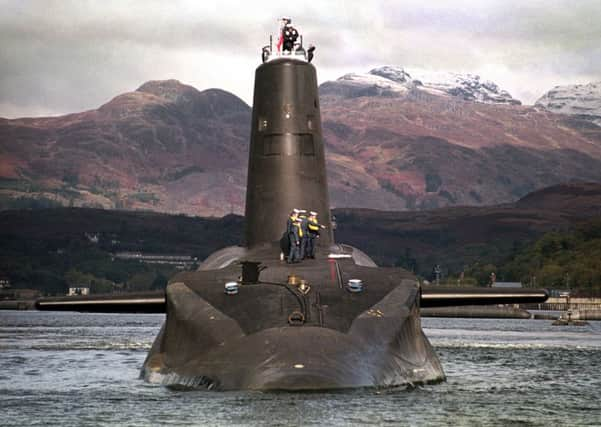What is Trident... and why do we need it?


MPs are set to vote tonight on renewal, which is estimated to cost around £40 billion, and Mrs May will tell them it would be “grossly irresponsible” not to back Trident.
She will accuse anti-nuclear Jeremy Corbyn of “misplaced idealism” as his Labour Party looks set to split on the issue, with the shadow cabinet calling for MPs to abstain but senior figures such as deputy leader Tom Watson and leadership candidate Owen Smith backing renewal.
Advertisement
Hide AdAdvertisement
Hide AdDespite the opposition of the SNP and reportedly less than half of Labour MPs, the Government will expect to win the vote and proceed with renewing the submarine deterrent.
Mrs May will open the Commons debate and is expected to say “the nuclear threat has not gone away, if anything, it has increased”.
Here are some of the key statistics behind the UK’s Trident nuclear deterrent:
• The Trident system consists of three elements - submarines, missiles and warheads.
Advertisement
Hide AdAdvertisement
Hide Ad• Britain currently has four Vanguard submarines capable of storing and firing nuclear missiles. One of the four is always at sea and armed for attack, one is always undergoing maintenance, and the other two are kept in port or used for training.
• The submarines can carry a maximum of eight missiles and a total of 40 warheads.
• The UK has a stockpile of 120 nuclear warheads that are operationally available. This is down from 160 in 2010.
• By the mid-2020s it is intended that the UK’s overall nuclear weapon stockpile - including those that are non-operational - will be reduced to no more than 180 warheads.
Advertisement
Hide AdAdvertisement
Hide Ad• The UK currently possesses around 1% of the total global stockpile of nuclear weapons.
• The decision to acquire the Trident system was made in 1980 and the first Vanguard nuclear-armed submarine entered service in 1994. They are due to reach the end of their working lives in the late 2020s.
• The upgrade programme will replace the four Vanguard submarines with a new class of four submarines, known as Successor. The replacement programme was approved by Parliament in 2007 and is not expected to be complete until the early 2030s.
• The cost of manufacturing the four new submarines is estimated by the Government to be £31 billion.
Advertisement
Hide AdAdvertisement
Hide Ad• An additional £10 billion has been set aside as a contingency.
• Some £3.9 billion has already been spent on the design of the submarines. According to the House of Commons library, £0.9 billion was also spent on the initial “concept” phase.
• This brings the total cost of designing and replacing the UK’s nuclear-armed submarines to almost £46 billion.
Read more...